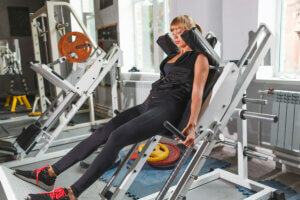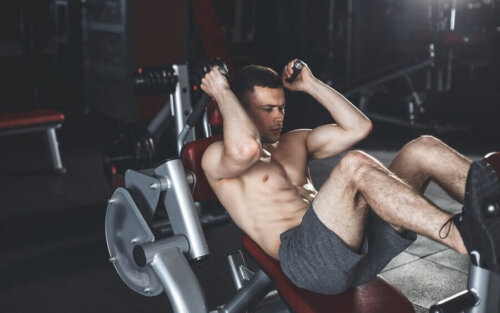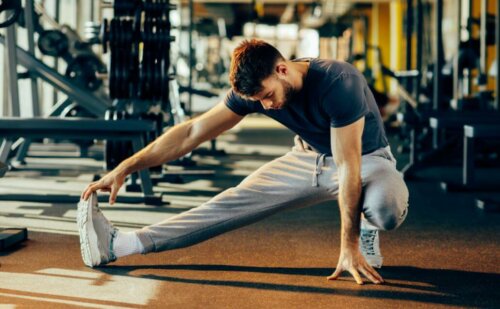Some Tips for Using a Hack Squat Machine

Anyone who wants to have a rocking body wishes to gain muscle mass in their legs. These tips for using the hack squat machine will help you reach your fitness goals in no time, as long as you put in the work and stay determined!
The quadriceps, glutes, and other leg muscles, as well as the calves and hamstrings, benefit from squats. In fact, it’s a great idea to resort to the hack squat machine, as it’ll allow you to reach your goals a lot faster.
If you start using it periodically, you’ll see results, which translate into bigger and more defined muscles, in a short time. What should you know about this machine?
The hack squat machine and its history
The hack squat machine was invented to meet the athlete’s needs to vary classic squats. Two decades later, in the sixties, upper shoulder pads were incorporated into a fixed seat. To use the machine, you have to move your feet against a weighted, moving platform and support your shoulders with the bars.
This great technological invention was very well received in the world of fitness, as it allowed athletes to vary their leg workout routines. Its main benefits are that it’s less damaging and much more effective than doing barbell squats.
The structure of the hack squat machine
The hack squat machine consists of two rails that the weights slide through. It has a fixed seat and a platform to place the feet; the support consists of a backrest with two bars, under which the shoulders rest.

The bar the weight is placed on is arranged horizontally. This is the load the athlete has to bear while they move up and down.
Using the hack squat machine mostly works the quadriceps muscle group. This muscle group consists of the vastus medialis, vastus intermedius and vastus lateralis, along with the rectus femoris.
Depending on the position in which you place your feet, you can also work other areas of your legs. For this reason, machine hack squats are considered one of the most complete exercises for this area of the body.
How to do a hack squat with this machine
To do a squat with this machine, first support your back against the seat. Your legs should be stretched and spread shoulder-width apart. You must make sure you place your shoulders below the shoulder pads. Point your toes outwards.
Then, hold the side handles with your hands. With your legs straight, lower your legs while you breathe in. Do so until your legs reach a less than 90-degree angle.
Your knees should be in line with your toes. Hold this position for a few seconds and then push up through the back of your feet to extend your legs back to the starting position while exhaling. Then, start a new squat.
The best tips for using this machine
You’ll get better results with a hack squat machine if you take the following tips into account. They’re easy to implement and are beneficial in many ways.
- Never close your legs while you’re going up. This way, it’ll be easier for you to do the exercise and it’ll have a better effect on the quadriceps, glutes, and hamstrings.
- You should always contract your abs and your feet must remain flat on the platform.
- The number of repetitions will depend on your trainer’s instructions or on how many you can do.

- Always keep your head upright and your posture steady.
- While you extend your legs, the momentum should be on your heels. In fact, it’s a good idea to use special weightlifting shoes. If you don’t have any, you should place platforms under your heels.
The necessary repetitions
The best way to build your quadriceps is to do four sets of 8 to 15 repetitions each. After each set, you can add more weight to the machine. But instead of reducing the number of repetitions due to pain, it’s best to remove weight from the machine.
With these tips for using the hack squat machine, you’ll be able to enjoy better results. Thus, you’ll be able to build bigger quadriceps, glutes, and hamstrings in a short time. All you have to do is put in the work with discipline and dedication to get that hot body that all athletes dream of!
Anyone who wants to have a rocking body wishes to gain muscle mass in their legs. These tips for using the hack squat machine will help you reach your fitness goals in no time, as long as you put in the work and stay determined!
The quadriceps, glutes, and other leg muscles, as well as the calves and hamstrings, benefit from squats. In fact, it’s a great idea to resort to the hack squat machine, as it’ll allow you to reach your goals a lot faster.
If you start using it periodically, you’ll see results, which translate into bigger and more defined muscles, in a short time. What should you know about this machine?
The hack squat machine and its history
The hack squat machine was invented to meet the athlete’s needs to vary classic squats. Two decades later, in the sixties, upper shoulder pads were incorporated into a fixed seat. To use the machine, you have to move your feet against a weighted, moving platform and support your shoulders with the bars.
This great technological invention was very well received in the world of fitness, as it allowed athletes to vary their leg workout routines. Its main benefits are that it’s less damaging and much more effective than doing barbell squats.
The structure of the hack squat machine
The hack squat machine consists of two rails that the weights slide through. It has a fixed seat and a platform to place the feet; the support consists of a backrest with two bars, under which the shoulders rest.

The bar the weight is placed on is arranged horizontally. This is the load the athlete has to bear while they move up and down.
Using the hack squat machine mostly works the quadriceps muscle group. This muscle group consists of the vastus medialis, vastus intermedius and vastus lateralis, along with the rectus femoris.
Depending on the position in which you place your feet, you can also work other areas of your legs. For this reason, machine hack squats are considered one of the most complete exercises for this area of the body.
How to do a hack squat with this machine
To do a squat with this machine, first support your back against the seat. Your legs should be stretched and spread shoulder-width apart. You must make sure you place your shoulders below the shoulder pads. Point your toes outwards.
Then, hold the side handles with your hands. With your legs straight, lower your legs while you breathe in. Do so until your legs reach a less than 90-degree angle.
Your knees should be in line with your toes. Hold this position for a few seconds and then push up through the back of your feet to extend your legs back to the starting position while exhaling. Then, start a new squat.
The best tips for using this machine
You’ll get better results with a hack squat machine if you take the following tips into account. They’re easy to implement and are beneficial in many ways.
- Never close your legs while you’re going up. This way, it’ll be easier for you to do the exercise and it’ll have a better effect on the quadriceps, glutes, and hamstrings.
- You should always contract your abs and your feet must remain flat on the platform.
- The number of repetitions will depend on your trainer’s instructions or on how many you can do.

- Always keep your head upright and your posture steady.
- While you extend your legs, the momentum should be on your heels. In fact, it’s a good idea to use special weightlifting shoes. If you don’t have any, you should place platforms under your heels.
The necessary repetitions
The best way to build your quadriceps is to do four sets of 8 to 15 repetitions each. After each set, you can add more weight to the machine. But instead of reducing the number of repetitions due to pain, it’s best to remove weight from the machine.
With these tips for using the hack squat machine, you’ll be able to enjoy better results. Thus, you’ll be able to build bigger quadriceps, glutes, and hamstrings in a short time. All you have to do is put in the work with discipline and dedication to get that hot body that all athletes dream of!
All cited sources were thoroughly reviewed by our team to ensure their quality, reliability, currency, and validity. The bibliography of this article was considered reliable and of academic or scientific accuracy.
- Chijani, Nicolás. Análisis biomecánico de las sentadillas. Extraído de: https://g-se.com/uploads/blog_adjuntos/an_lisis_biomec_nico_de_las_sentadillas.pdf
- Miguel A. Lavorato. Nicolás Vigario Pereira. Las sentadillas, ¿son un ejercicio potencialmente lesivo? Extraído de: http://www.productosfortia.com/la-sentadilla-es-un-ejercicio-potencialmente-lesivo.pdf
This text is provided for informational purposes only and does not replace consultation with a professional. If in doubt, consult your specialist.








